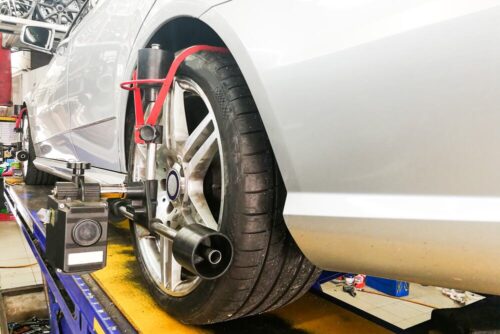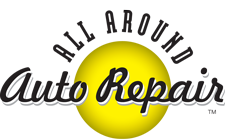A lot goes into ensuring that your vehicle is in pristine condition. Some of these issues are common and are easy to stop (e.g., making sure the proper water, and oil level). However, most are easy to ignore resulting in significant problems. Wheel alignment is one of those areas that are vital but are easily overlooked.
What is wheel alignment?

Wheel alignment is the right adjustment of all interrelated suspension. It ensures that all the wheels are pointing in the same direction and then connected to the steering wheel.
Wheels get knocked out of alignment for various reasons and can be broken down into three categories.
- Impact – Sudden impact is the most common reason for wheel misalignment. You might notice that your wheels are askew after an accident, hitting the curb, driving over a pothole, or driving too fast over bumps.
- Wear and tear – Eventually, your wheel will be out of true owing to the wearing away of suspension.
- Height modification – Finally, your wheels may go out of alignment when you change the height. Vehicle suspension is designed for a particular height. Therefore ensure you change the suspension should you adjust the height.
Signs of Misaligned Wheels
The first sign that wheels are out of alignment is if your steering wheel is pulling to the left or the right. You should also lookout for vibration on the steering wheel.
Also, check the tread wear to tell if your wheels are out of alignment. Often, when wheels are askew, the pressure is on one part (either the inside or the outside), and that part deteriorates faster than the rest of the wheel.
Another sure sign of misalignment is squealing wheels especially when turning a regular corner.
Finally, one of the severe signs should the issue go for long unsolved is that the steering wheel is crooked when driving down a straight road. You can also tell when parked. Often your steering wheel will be bent when your wheels are straight ahead.
Importance of Wheel Alignment
- To ensure even tread wear
When tires are out of alignment, they tend to wear unevenly and prematurely. Seeing as all the weight is on one part of the wheel, it sustains damage faster, and you have to replace them sooner.
You will save money in the long run by ensuring your wheels are ever aligned.
- Steering problems
As stated earlier, one sign of misaligned wheels is if your steering wheel pulls to the left or the right. Your vehicle will consistently pull to one direction, and though you may eventually get used to it, it is best to go for a correction.
- Performance
Your vehicle can only perform well when the wheels are aligned. Imagine riding a bicycle with the back wheel turned 30 degrees? Chances are it is difficult, and you will use more energy. The same applies to vehicles.
Braking and going around a corner will be difficult with misaligned wheels. The vehicle may also feel unsteady or itchy, and the only way to improve performance is to correct the alignment.
It is recommended you get your alignment at least once a year or after 10,000km. Moreover, wheel alignment is a technical job, and it is best to engage the services of a professional such as all-around auto repair for top results


